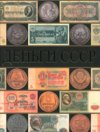
-
 Anglický jazyk
Anglický jazyk
Scottish Highlanders on the Eve of the Great Migration, 1725-1775
Autor: David Dobson
In 2005 Clearfield Company launched a new series of books by David Dobson designed to identify the origins of Scottish Highlanders who traveled to America prior to the Great Highland Migration that began in the 1730s and intensified thereafter. Much of the... Viac o knihe
Na objednávku, dodanie 2-4 týždne
28.80 €
bežná cena: 32.00 €
O knihe
In 2005 Clearfield Company launched a new series of books by David Dobson designed to identify the origins of Scottish Highlanders who traveled to America prior to the Great Highland Migration that began in the 1730s and intensified thereafter. Much of the Highland emigration was directly related to a breakdown in social and economic institutions. Under the pressures of the commercial and industrial revolutions of the 17th and 18th centuries, Highland chieftains abandoned their patriarchal role in favor of becoming capitalist landlords. By raising farm rents to the breaking point, the chiefs left the social fabric of the Scottish Highlands in tatters. Accordingly, voluntary emigration by Gaelic-speaking Highlanders began in the 1730s. The social breakdown was intensified by the failure of the Jacobite cause in 1745, followed by the British military occupation and repression in the Highlands in the aftermath of the Battle of Culloden. In 1746, the British government dispatched about 1,000 Highland Jacobite prisoners of war to the colonies as indentured servants. Later, during the Seven Years War of 1756-63, Highland regiments recruited in the service of the British crown chose to settle in Canada and America rather than return to Scotland.Once in North America, the Highlanders tended to be clannish and moved in extended family groups, unlike immigrants from the Lowlands who moved as individuals or in groups of a few families. The Gaelic-speaking Highlanders tended to settle on the North American frontier, whereas the Lowlanders merged with the English on the coast. Highlanders seem to have established "beachheads," and their kin subsequently followed. The best example of this pattern is in North Carolina, where they first arrived in 1739 and moved to the Piedmont, to be followed by others for over a century.
Another factor that distinguishes research in Highland genealogy is the availability of pertinent records. Scottish genealogical research is generally based on the parish registers of the Church of Scotland, which provide information on baptisms and marriages. In the Scottish Lowlands, such records can date back to the mid-16th century, but, in general, Highland records start much later. Americans seeking their Highland roots, therefore, face the problem that there are few, if any, church records available that pre-date the American Revolution. In the absence of Church of Scotland records, the researcher must turn to a miscellany of other records, such as court records, estate papers, sasines, gravestone inscriptions, burgess rolls, port books, services of heirs, wills and testaments, and especially rent rolls. (Some rent rolls even pre-date parish registers.)
This series, therefore, is designed to identify the kinds of records that are available in the absence of parish registers and to supplement the church registers when they are available.
Volume Three, the latest in the series, covers Highlanders from the county of Inverness, a location from which many of the pioneer emigrants who settled in colonial Georgia, Pennsylvania, upper New York, Jamaica, and the Canadian Maritimes originated. Inverness-shire is also the county where the Fraser's Highlanders regiment, which played a prominent part in the French and Indian War and in the settlement of Canada, was raised.
While the present volume is not a comprehensive directory of all the people of Inverness-shire during the mid-18th century, it does pull together references on more than 2,100 18th-century inhabitants. Coverage extends to all regions within Inverness. In all cases, Mr. Dobson gives each Highlander's name, a place within Inverness-shire (birth, residence, employment, etc.), a date, and the source. In some cases, we also learn the identities of relatives, the individual's employment, vessel traveled on, and so forth.See also the other volumes in this series:
The People of Argyll
The People of Highland Perthshire
The People
- Vydavateľstvo: Genealogical Publishing Company
- Rok vydania: 2009
- Formát: Paperback
- Rozmer: 216 x 140 mm
- Jazyk: Anglický jazyk
- ISBN: 9780806353241






 Ruský jazyk
Ruský jazyk 





